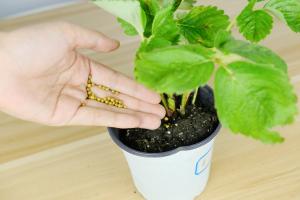How to Plant Black Walnut Tree Seeds
Black walnut trees are a favorite among gardeners and landowners due to their high-quality wood, delicious nuts, and beautiful appearance. If you want to grow your own black walnut trees, you can start by planting their seeds. Here are some tips on how to plant black walnut tree seeds:
1. Collecting Black Walnut Tree Seeds
The first step in planting black walnut tree seeds is to collect them. Black walnuts are ready for harvesting in late summer or early fall. When collecting black walnut tree seeds, look for mature nuts that have fallen to the ground. You can also shake the tree to knock mature nuts off the branches. Collect the nuts as soon as possible, as they can dry out quickly and lose their viability.
2. Preparing the Seeds
Before planting the seeds, you need to prepare them. Start by removing the outer hull of the black walnut, as it contains a chemical that can inhibit germination. Wear gloves to protect your hands from the staining properties of the hull. After removing the hull, rinse the nuts in water and pat them dry with a towel. Soak the nuts in water for 24 hours to help soften the shell and speed up germination.
3. Planting the Seeds
Black walnut tree seeds can be planted in the fall or spring. If you're planting in the fall, plant the seeds as soon as possible after collecting them. If you're planting in the spring, store the seeds in a cool, dry place until planting time. When planting, aim for a depth of around 2 inches, and make sure the soil is well-draining. Water the seeds well and keep the soil moist during the germination process.
4. Caring for the Seedlings
Once the seeds have germinated, you need to care for the seedlings. Protect the seedlings from animals and pests that may damage them. Water the seedlings regularly, but avoid over-watering, as this can cause root rot. You can also fertilize the seedlings with a balanced, slow-release fertilizer to promote healthy growth. Transplant the seedlings to their permanent location after they have grown to around 1 foot in height.
5. Conclusion
Planting black walnut tree seeds can be a rewarding experience, but it requires patience and careful attention to detail. With the right preparation and care, black walnut tree seeds can grow into strong, thriving trees that will enhance any landscape for generations to come.

 how many times do yo...
how many times do yo... how many planted tre...
how many planted tre... how many pine trees ...
how many pine trees ... how many pecan trees...
how many pecan trees... how many plants comp...
how many plants comp... how many plants can ...
how many plants can ... how many plants and ...
how many plants and ... how many pepper plan...
how many pepper plan...
































